#medicalhistory
Text
Did you know that antibiotic resistance is as old as antibiotics themselves?

#TeachingRounds#FOAMed#infectiousdisease#microbiology#bugsanddrugs#antibioticresistance#historyofmedicine#medicalhistory
36 notes
·
View notes
Photo

Plagues Upon the Earth: Disease and the Course of Human History
At the height of the COVID-19 lockdown in October 2020, Brown University hosted the Pandemics and Plagues in Antiquity webinar lecture series. Kyle Harper, Professor of Classics at the University of Oklahoma, hosted the first session. The talk featured the content of his book The Fate of Rome: Climate, Disease, and the End of an Empire (2017). Unbeknown to me at the time, Harper had already begun working on his next book, Plagues Upon the Earth: Disease and the Course of Human History (2021), before the COVID-19 pandemic began. This monumental book arrived at bookstores a year later, and just like its predecessor The Fate of Rome, I swiftly obtained a copy.
Amid complex virological and genetic concepts, Harper conveys them in an approachable and insightful way.
The introduction of Plagues Upon the Earth clearly presents Harper's goals for this book, the research question, and the limitations of writing a history covering millions of years and every corner of the planet. This book could have easily been a trilogy - a trilogy I would buy. It covers a depth of information, leaving the readers hungry for more, while still managing to solidify itself as a single book. “The goal of this book is to tell the story of how we have acquired our distinct disease pool and what it has meant for us as a species. It is a history in which we are a part of nature, rather than apart from it” (5). Harper’s argument is based on four sections of humankind’s technological innovations and how they impacted our relationship with diseases: fires, farms, frontiers, and fossils. “Modernity is not a one-way street to human supremacy over nature, but a kind of escalating ratchet, in which humans have gained a remarkable but unstable advantage over an ever-growing number of parasites” (8). Pathogens have one goal, and that is to pass on their genetic code. Humans have crafted themselves to be the perfect hosts for this goal due to our immensely dense population and the high transmission rate of our global interconnection. Humans are a successful species, and pathogens and parasites have benefited from our success.
Continue reading...
32 notes
·
View notes
Photo


Because GNC people have always been around. This is from 1845 in a medical book. I read these with a sad heart for the people who got studied and analyzed by these doctors.
2 notes
·
View notes
Link
Lori and George Schappell, the world's oldest living conjoined twins according to Guinness World Records, passed away this month at the age of 62. Their story, documented in numerous television specials and defying medical odds, serves as a testament to the resilience of the human spirit and the power of living life to the fullest, even in extraordinary circumstances. A Life Lived on Their Terms: Separate Passions, One Journey Born in 1961 in West Reading, Pennsylvania, Lori and George were conjoined at the skull, sharing a head but possessing distinct brains and personalities. George, who had spina bifida, relied on Lori for mobility and navigated their world with the help of an adaptive wheeled stool. Despite their physical connection, the twins strived for independence throughout their lives. Conjoined Twins Lori and George Schappell "It was very important to both of us to live as independently as possible," their obituary stated. This dedication to independence manifested in their varied passions and career paths. While Lori excelled as a "trophy-winning bowler," George pursued a career in country music. Their story transcended the limitations some might have expected. Lori, at one point, was even engaged to be married, highlighting their ability to forge individual connections while sharing a life. Overcoming Obstacles: Education, Careers, and Public Appearances Despite the challenges posed by their conjoined state, the Schappell twins graduated from high school and pursued further education. George, accompanying Lori during her college classes, exemplified their unwavering support for one another. Their journey wasn't limited to the classroom. Lori eventually left her hospital laundry job to support George's dream of becoming a country music singer. This selfless act showcased their commitment to individual aspirations within their shared existence. The twins didn't shy away from public life. They embraced opportunities to share their story, appearing in documentaries, talk shows, and even an episode of the medical drama "Nip/Tuck." Through these appearances, they not only educate the public about conjoined twins but also challenge societal perceptions of disability and the limitations it might impose. A Bond Beyond Separation: Choosing Unity Over Surgery While surgical separation was a theoretical possibility, the Schappells firmly rejected this option. They viewed their conjoined state not as a limitation, but as a unique bond they wouldn't sever. "You don't mess with what God made, even if it means you enjoy both children for a shorter time," Lori once told The Associated Press. This sentiment was echoed by George, who stated, "Why fix what is not broken?" Their unwavering commitment to one another and their acceptance of their unique physical reality serve as an inspiration for all who face adversity. A Legacy of Resilience: The Schappell Twins and Conjoined Twin Statistics The Schappell twins' passing leaves a void in the world of conjoined twins. While the exact successor for the title of "oldest living conjoined twins" remains uncertain, their story continues to resonate. Conjoined twins are a rare occurrence, happening in only about 1 in 50,000 to 60,000 births. Sadly, most are stillborn, and only a small percentage are joined at the head, like Lori and George. The Schappell twins defied the odds not only by surviving but by thriving. They graduated from high school, pursued individual interests, and built a life filled with travel, public appearances, and personal connections. Their story reminds us that human connection and a zest for life can overcome even the most extraordinary physical challenges.
#acceptance#conjoinedtwins#ConjoinedTwinsLoriandGeorgeSchappell#documentary#independence#inspiration.#legacy#LoriandGeorgeSchappell#medicalhistory#NipTuck#oldestliving#resilience#transgender
0 notes
Text
0 notes
Text
Healthcare Begins at Home: The Importance of a Family Doctor | Dr. Jamal A Khan
youtube
A family doctor is a primary care physician who provides comprehensive healthcare services to people of all ages, from infants to the elderly. Family doctors are trained to diagnose and treat a wide range of medical conditions, both acute and chronic. They also provide preventive care, such as immunizations and annual checkups. Having a family doctor is important for a number of reasons. First, it provides you with a single point of contact for all of your healthcare needs. This can be helpful in coordinating your care and ensuring that all of your providers are on the same page. Second, family doctors get to know you and your family over time. This allows them to develop a deeper understanding of your medical history and risk factors, which can lead to better care.
#FamilyDoctor#PrimaryCarePhysician#ComprehensiveHealthcare#PreventiveCare#MedicalDiagnosis#HealthcareCoordination#PatientRelationship#HealthcareContinuity#MedicalHistory#HealthcareProvider#Youtube
0 notes
Text
From 0 to 70: The Evolution of Clinics | Kelly Ziegler| PT Pro Talk Podcast

In the insightful podcast episode "From 0 to 70: The Evolution of Clinics" hosted by Kelly Ziegler, a comprehensive journey through the transformation of clinics is explored. From their humble beginnings to the dynamic and advanced healthcare centers of today, the episode delves into the pivotal milestones that have shaped the way clinics operate and serve their patients. By tracing this evolution, listeners gain a deeper understanding of the healthcare landscape's growth and the continuous efforts to enhance patient care. 🏥💡👩⚕️
#ClinicEvolution#HealthcareTransformation#PatientCare#MedicalAdvancements#InnovationInHealthcare#WellnessJourney#HealthTech#MedicalHistory#PatientExperience#HealthcarePodcast
0 notes
Text
#medicalhistory#history#Britishhistory#Georgians#anatomy#dissection#bodysnatching#surgery#graverobbing#resurrectionists#WilliamHunter#LyricTheatre
0 notes
Photo

Smiling through the pain. Ugh, periods and my kidney and bladder crap! I wish I didn’t have the reflux! But this all Makes me think about if I were back in the 1950’s and earlier, I could be placed in a mental hospital for having bad cramps. I am not even joking. And women could be institutionalized for a bad period and menopause. I hate to think that we are going backwards in history. Did we not learn? Women were also being incarcerated for having STI in the 1950’s. Also,If you were having an off day and/or your spouse was sick of you, he could have you institutionalized. Whether you wanted to go or not! No choice! The chances of lobotomy then were high too, since it became popular during 1930’s.the last one being performed in 1967 here in the states. But the STI, incarcerations on women were even happening in the earlier 1900’s. 1919 a woman and her sister were both arrested by the morale police, in Sacramento,California. Why? Because they looked “suspicious “ yep. So they were forced to go to the hospital to get forced pelvic exams and checked for sti. If it was they were positive they would have been taken away with no due process. This happened to tens of thousands to hundreds of thousands of American women from 1919 all the way to the 1970’s in some places. The women would be confined for weeks to months. Forced injections of mercury and other medications would be given. It was hell. Some were even forced to take arsenic. Some were put in solitary confinement. And many others forced sterilization. And this happened to women. Another part of America’s dark demented past. A past that is slowly coming back into fashion. But this is not like low rise jeans or acid wash jeans. This is a dangerous thing. And sometimes we need to explore history and understand it. History must be taught! #americanhistory #womenshistorymonth #womenshistory #medicalhistory #womensupportingwomen #womensday #thedegreelesshistorian https://www.instagram.com/p/CqReDt_LBDz/?igshid=NGJjMDIxMWI=
#americanhistory#womenshistorymonth#womenshistory#medicalhistory#womensupportingwomen#womensday#thedegreelesshistorian
1 note
·
View note
Text
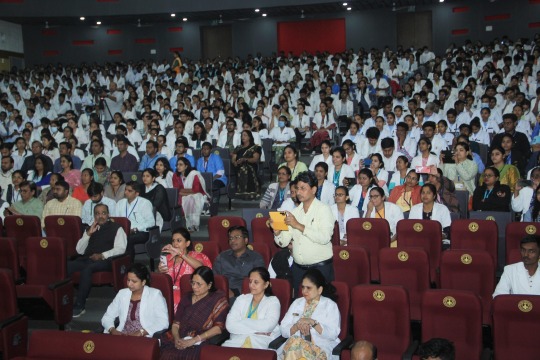
On February 3, 2023, the Jawaharlal Nehru Medical College Medical Museum in Wardha was inaugurated. This state-of-the-art museum is one of a kind historical.
#JNMCmedicalmuseum#Wardha#Maharashtra#medicalhistory#healthcareevolution#medicalmuseum#honourableguests#inaugurationday#historicalimportance#mustsee#knowledgeispower
0 notes
Text
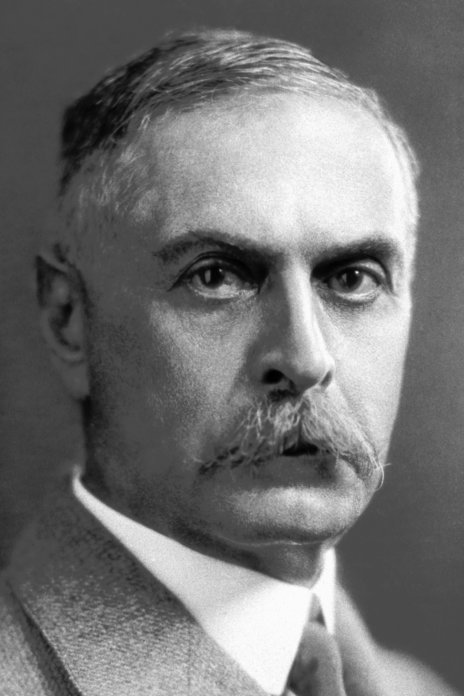
In 1930, Karl Landsteiner was awarded the Nobel Prize in Physiology or Medicine for his discovery of human blood groups. “When a person loses lots of blood through accident or illness, it must be replaced. When transfusions from one person to another were tried, however, the result was very often disastrous. Karl Landsteiner discovered why: when different people's blood was mixed, the red blood cells sometimes clumped. He explained in 1901 that people have different types of red blood cells, that is, there are different blood groups. The discovery led to safe blood transfusions between people with compatible blood groups.”
3 notes
·
View notes
Text

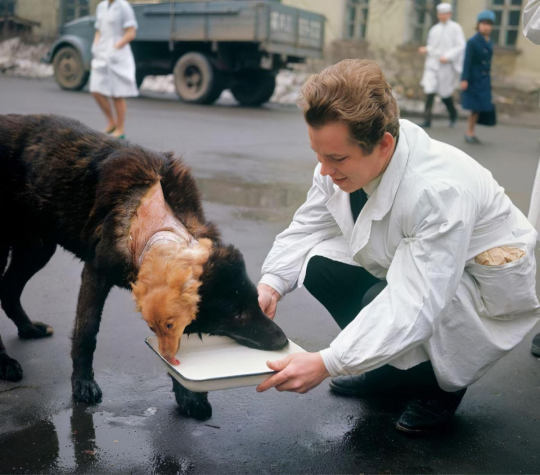


The Two-Headed Dog Experiment Soviet Scientist who Grafted the Head of the dog onto another Dog
#twoheadeddog#expirement#sovietunion#soviethistory#animalcruelty#animalrights#medicalhistory#operation
1 note
·
View note
Photo
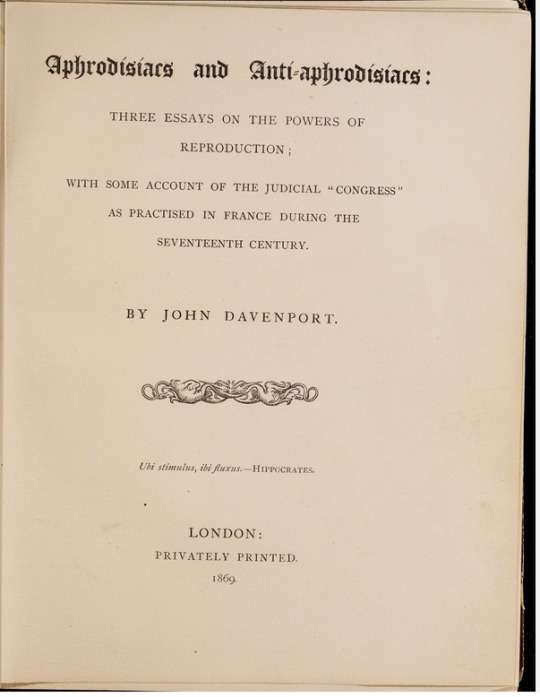
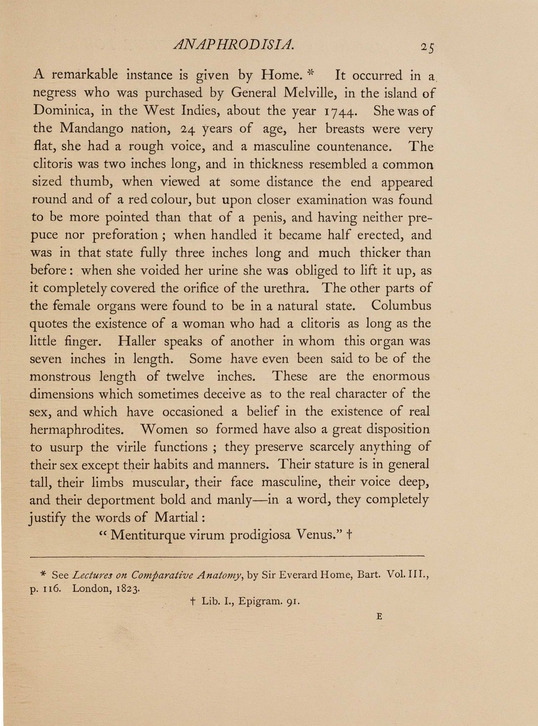
More medical horror. 1869. Evidence of gender variance always existing and people always harming those who fall out of the binary. 19th century medical literature is a horror show.
0 notes
Photo

Dr. Robert Liston's quick surgeries were praised in the days before anesthesia, but his legacy is forever marred by the devastating effects of his hasty actions. Join us live Thursday night on YouTube Facebook Instagram or Twitter to participate in the conversation. Catch edited episodes on Anchor and Spotify. #truecrimestory #truecrimefans #truecrimefan #podcasts #podcast #truecrimes #truecrimehistory #history #medicine #doctor #doctors #medicalhistory #historytime #historybuff #badmedicine #legendary #reckless #dangerous #wildhistory #wildhistoryfacts #medicalhistoryfact #medical #spotify #anchorpodcast #youtube #facebook #instagram #twitter #truecrimepodcast #truecrimepodcasts https://www.instagram.com/p/CgQWnvfstn-/?igshid=NGJjMDIxMWI=
#truecrimestory#truecrimefans#truecrimefan#podcasts#podcast#truecrimes#truecrimehistory#history#medicine#doctor#doctors#medicalhistory#historytime#historybuff#badmedicine#legendary#reckless#dangerous#wildhistory#wildhistoryfacts#medicalhistoryfact#medical#spotify#anchorpodcast#youtube#facebook#instagram#twitter#truecrimepodcast#truecrimepodcasts
0 notes
Text
Vaccines have come a long way from rubbing scabs on open sores. Discover the dark history of a lifesaving practice!
0 notes